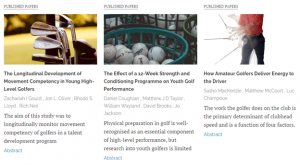Steve Faulkner
Sports Engineering Seminar Day 2024
The funding was used to support Nottingham Trent University in hosting the annual Sports Engineering Seminar Day 2024. The event was targeted at students and academics currently active in the field of Sports Engineering and associated disiplines. We had over 100 people register for the event, with 70+ deligates attending on the day, spanning industry, academia and the wider public. We were able to attract several industry speakers, spanning multiple disciplines of Sports Engineering, all of whome gave inspring and engaging talks of their experience. Speakers included Dr Johnathan Shepard, PING; Chris Hebert, UKSI aerodynamicist, Dr Rebecca Grant from Loughborough University and Dr Jamie Pringle for Vorteq. Since the event, I have received some excellent feedback on the line up of invited speakers and academic presentations, with specific mention of how insightful the presentation were for early career sports engineers who are currently forging their way in the early part of their engineering career. Of particular note in several cases was Dr Hebert's talk, which focused on the failure he has experience in sport, and how these have made him a better more rounded and knowledgable engineer in the longer term.
As a result of the funding, we were able to support current students, both undergraduate and postgraduate, in presenting their research work to a wider audience. The academic audience commeted widely on the quality and interest of the work which was presented by the students. It was felt that the integration of industry, academia and student presentations, gave a really good feel to the day, and enhanced the Seminar's reputation for being a friendly and engaging event for deligates at all stages of their career.
As a result of the event, we have been able to put the Department of Engineering at Nottingham Trent University and Sports Engineering in particular, on the UK map as a department which has developed an excellent reputation for delivering industry facing research, aiming to answer real-world applied problems. The event help our own academics initial furture collaborations with other academics, institutions and industry, beyond NTUs recent focus on endurance sports. Without the support of ISEA, it would have taken much longer for the NTU academics to make these connections in the UK Sports Engineering community. Furthermore, as a direct result of our involvement in the Seminar Day, several of our academics, are now involved in the IMechE Sports Engineering Group, which aims to foster wider collaboration in the sector, and exert influence outside of academia.
The Sports Engineering Seminar day was an unriavalled success, and we thank ISEA for the support provided, which enabled us to put on such a highly successful event.
Year: 2024Value: £1500
University: Nottingham Trent University, UK
Adil Imam
6th Annual Sports Engineering Seminar Day
Canterbury Christ Church University (CCCU) hosted the 6th Annual Sports Engineering Seminar Day on Wednesday, 12th of April 2023 at the Verena Holmes Building on the Canterbury Campus. The event was attended by 80 attendees with varied backgrounds ranging from industry experts, academics and teachers from universities and colleges, students from different levels ranging from high school to PhD researchers and sports enthusiasts. The day started off with tours of the Verena Holmes building showcasing the Faculty of Science Engineering and Social Sciences facilities including the Sports Labs, The Engineering and Material Testing facilities, and the medical and nursing school facilities.
Overall the event involved 17 speakers from Academia and Industry talking about the different work done in the sports engineering industry. DrAnne Nortcliffe, the founding head of the School of Engineering, Technology and Design provided the welcome address highlighting the different issues with diversity in engineering and how sports engineering and industry researchers can help improve engineering standards, especially in terms of inclusivity. Emelia Funnell, of Ida Sports and Dr Katrine Kryger, from St. Mary's University showcased work and research that is being carried out to address the inclusivity issues and what the industry is doing to raise awareness and provide better equipment for women in sports.
Other talks during the day ranged from different forms of cycling and the engineering that goes behind it to the research carried out in improving sporting and protective equipment for amateur, professional, able-bodied and paralympic athletes. There were presentations also on different events and networks such as the 15th Conference on the Engineering of Sport to be held in Loughborough in 2024, and the UK meta-materials network. There were 2-minute student presentations from research students from the University of Manchester, the University of Kent, Loughborough University, and CCCU, with Callum Barnes of the University of Kent taking the best student presentation prize, giving him a free year-long student membership of the International Sports Engineering Association which was provided as part of the grant.
The event allowed the attendees, to mingle with the different industry experts and researchers which allowed for further collaborations and the exchange of ideas which will help in outputs which would be seen in the coming months. There were members of the public for whom the event provided an eye-opener to the opportunities in sports engineering and the possibilities which they did not comprehend before attending the seminar day. Amongst the attendees were some of the career advisors at local colleges who were excited at disseminating their learnings from the day to the college students and helping provide them with an avenue to get into Science, Technology, Engineering and Mathematics (STEM) related courses.
The ISEA funding provided for the day was used to provide hospitality during the day for the attendees on the day and award the best student presentation with a year-long student membership of the association. The funding also was used to provide hospitality during the networking session in the evening where ideas were shared and possible collaborations for further work were discussed. Overall, the event provided an insight into the world of Sports Engineering, especially to the local and the south-eastern UK community and provided the students and researchers with an opportunity to connect, learn and discuss sports engineering and its applications.

Value: £1500
University: Canterbury Christ Church University
MS Dasgupta
3rd International Conference on Sports Engineering
The Sports Engineering Association, India (SEA) hosted the 3rd International Conference on Sports Engineering from November 2nd to 4th, 2023 at the BITS Pilani campus in Rajasthan, India. The conference was organised jointly by SEA and BITS Pilani University with technical collaboration and support from ISEA and under the auspices of the Ministry of Youth Affairs and Sports, Govt. on India (MoYS). "Engineering Application and Sports Performance" was the theme of the conference, and papers were solicited for the following four tracks: i) Computational, ii) Analysis and Modelling, iii) Design and Development, and iv) Sports Performance. Two best paper awards were presented for each track, in addition to a distinct best paper award for student participants, which was financially supported by an ISEA grant. Prominent figures in the field of sports engineering, including Mr. Sanand Salil Mitra, Prof. Lloyd Smith, Prof. David James, and Prof. Kazuya Seo, delivered four keynote addresses. A pre-conference workshop titled "Advances in Sports Performance Analysis and Applied Technologies" was followed by a panel discussion titled "Roadmap towards Indigenous Sports Technology" and a gala dinner at the conference inauguration venue outdoor. Labosport also coordinated a technology demonstration session on the second day of the conference, in addition to paper presentations, breakout sessions, and a local tour of the final day of the conference. The conference expenditures amounted to approximately INR 20,000,00/- the majority of which was covered by a substantial grant from the MoYS. The award-winning student papers investigated a wide range of intriguing topics, including "The Application of MCDM Techniques in Talent Identification," "Numerical Simulations and 3D tracking of a Tennis Ball Trajectory," and "Tracking the trajectory of a fast-moving ball using an Encoder-Decoder," among others. This iteration of the conference witnessed an increase in the quantity and calibre of papers presented. The organising body is extremely grateful to ISEA for its support of the grant award and for the President of ISEA delivering the keynote address in person.



Value: £500
University: BITS Pilani
Daniel James
The International ISEA STEMfit Cup
The grant was used to provde hardware and infrastructure to support an international Sports Engineering competition in primary schools. International teams were lead by renowned Sports Engineering researchers including Prof. Yuji Ohgi from Keio University Japan , A/Prof Tomo Wada from National Institute of Fitness and Sports, Japan, Prof Nicola Petrone from the University of Padova, Italy, Dr Mohammad Al-Rawi, Waikato Institute of Technology, Hamilton, New Zealand, Dr Lee, James from Charles Darwin University, Dr. Willis Griffith University, Brisbane Australia and Dr Brendon Ferrier from Edinburgh Napier University, Scotland.
A big congratulations to all teams who entered from Ngukurr and Brisbane -Australia, New Zealand, Scotland and Japan. With the various challenges of heat, rain , snow and COVID school closures it was impressive that all schools did so well. Not all schools could do all events, especially as some were constrained to backyards. The judges particularly liked the creativity of the Ngukurr video, the enthusiasm of the Haggis girls and the rock solid research performance of HPSS. Special mention to NZ’s young team who put everything together and we absolutely loved the precision of the 1/100’s of a second measurements from Team Japan..you guys rock!
A paper will be presented at the ISEA 2022 conference.
Authors: Daniel James, James Lee, Yuji Ohgi, Charlene Willis, Nicola Petrone, Brendon Ferrier, Tomohito Wada, Mohammad Al-Rawi and Jeff Parker
Title: STEM educational engagement through coopetition, sport and wearable technology
Youtube STEMfit cup playlist of announcements and entrants
https://www.youtube.com/watch?v=78iNI4NMMx4&list=PLNfADRt4TKvSl3aJWzqTkFSV90UNUyGJR
Blog Posts
- STEMfit Cup presentation the Holland Park State School
- Announcing the STEMfit Cup 2021 medalists
- ISEA STEMfit Cup 2021 Project entries
- ISEA International STEMfit Cup 2021, meet the judges
- Announcing the International ISEA STEMfit Cup
Value: £2410
University: Charles Darwin University et. al
Anna Giesler
"Increasing access to content shared at the ISEA Engineering of Sport 14 Conference"
I’d like to express my gratitude to the ISEA for supporting this initiative to increase access to the content shared at the recent Engineering of Sport 14 conference. The activity funds were used to cover the expenses incurred to record all the keynote and panel presentations, as well as provide a live stream for the panel session titled “Forging a Career in ports Engineering: How to Find Your Personal Path.”
The live streamed session, held as part of the full conference program, had 36 participants join virtually in addition to the in-person conference attendees (approximately 150). While we do not know the exact affiliations of all who attended online, there were several questions that indicated a large number were either students or recent graduates, which was the population we were targeting with this effort. Attached is a list of the Zoom attendees. This session was moderated by ISEA President, Dr. Jonathan Shepherd, and featured past and present ISEA EC members Dr. Nadine Lippa, Dr. Tom Allen, Patrick Mayerhofer, and Dr. Kim Blair (ISEA Fellow).
The recorded sessions have not, as of 3 August 2022, been uploaded or distributed in any manner. The decision for the best way to distribute and promote was delegated to the ISEA Executive Committee, who has better insight as to the most effective way to share this content and generate more engagement with the ISEA as a whole. At the EC meeting on 21 July 2022, it was discussed that the student-focused live streamed panel session would be shared first and available to anyone. ISEA branding will be added to the video and distributed on ISEA social channels, which should include the website. This video is the immediate focus, with the other keynotes and panel planning on being shared at a later time, after final confirmation is received from speakers that it is okay to share publicly. The distribution of these could be strategically timed with tactful messaging about ISEA membership. Another idea being explored for how to distribute is through the libraries site that the conference proceedings were posted on. The benefit to this option is being able to see more detailed metrics related to how many people are watching, from where, how many times, etc. It's still unclear whether or not the site will support video content like this.
From the beginning, the goal of this project was to create additional opportunities and means to engage with the ISEA. One achievement has been getting 34 people to attend the virtual conference session (with limited marketing beforehand). Now, the recordings will be accessible to people outside the reach of the conference. The new digital content created could be used to support sports engineering educators, raise awareness of the work being done in the academic and industrial sectors, and inspire students to get involved in sports engineering research. For the impact of the new digital content, the assessment metrics are fluid, meaning that there is not a singular event/day that can be used to analyze whether the target has been met. Over time, the analytics of the interactions with the content will provide information on which geographic regions are most engaged, what topics are the most interesting, and the demographic that is being reached, among other things, which could help inform future strategy for the ISEA.
A summary of the costs is below:
- Technical set up and tear down for all equipment, live stream of one 1hr session, plus 2 technicians: $2000 (£1633)
- Recording of all keynote and panel sessions: $700 (£574)
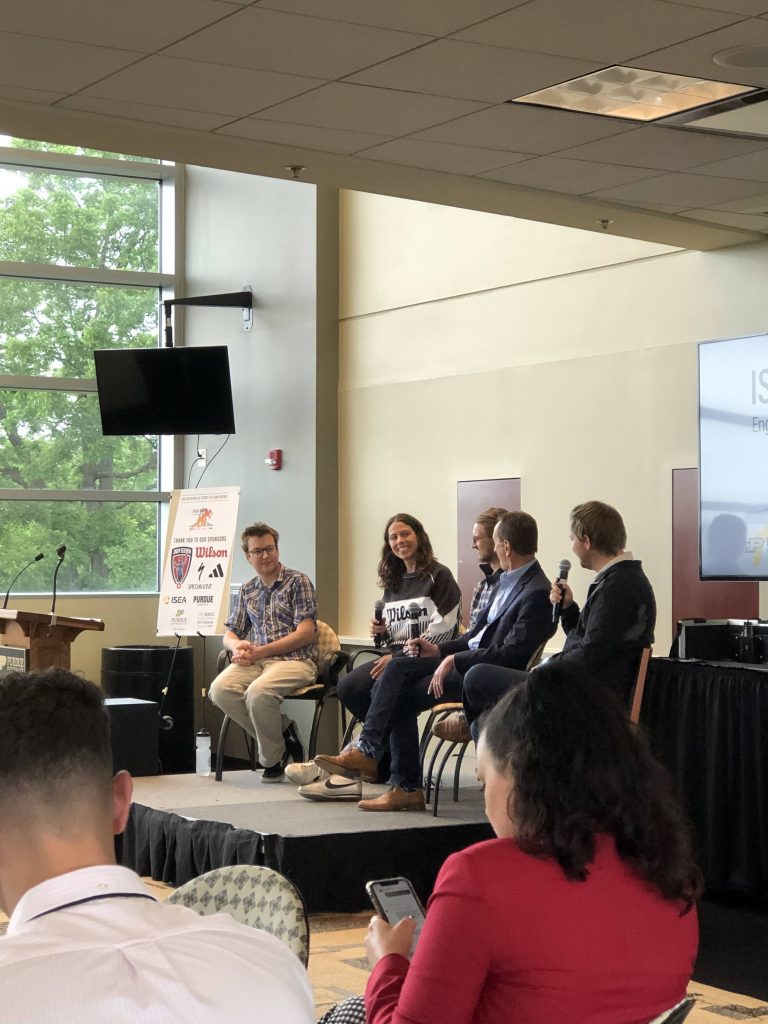
Value: £2207
University: Purdue University - Ray Ewry Sports Engineering Center
Erik Henrikson
International Journal of Golf Science
The International Journal of Golf Science (IJGS) is a peer reviewed publication and is the official journal of Golf Science, also known as the World Scientific Congress of Golf (WSCG). The WSCG was initiated in St. Andrews, Scotland, and held its first WSCG meeting in 1990. Alastair Cochran and Martin Farrally established the World Scientific Congress of Golf Trust to support the organization through 2002. The mission of Golf Science and the WSCG is to bring together researchers, professionals, and interested golfers to further the study and understanding of the golfer, the golf course, and equipment and technology.
The mission of the journal is to advance the scientific knowledge of the game of golf and enhance the game through the application of that knowledge. The journal is dedicated to stimulating and disseminating peer-reviewed research related to the golfer, equipment and technology, the golf course, business and management, and golf analytics. Submissions in the form of theoretical and applied research, review articles, and research notes are welcomed. Papers submitted do not have to include golfers or test golf as long as they further our understanding of one or more aspects of golf.
The Engaging Sports Engineering Grant supported the IJGS as an Open Access journal, aiming to not only provide the latest good quality academic research, but also for authors to provide a lay summary of the implications of their research to golfers, coaches/instructors/teachers and also policy makers. Since the receipt of the grant the journal has been able to cover the costs associated with an Open Access publication through Scholastica (www.scholasticahq.com) which covers all of the costs of producing a paper (including technical support for the submission and review process plus typesetting and online publication). In the past 12 months (noting the reduction of paper submissions during the Covid-19 period) we have had 23 papers submitted and currently there are 11 papers within the review process (since 2018 there have been 77 paper submitted). The grant is invaluable and supports the direction of the journal to remain open access to anyone with an interest in the science of the game.
Year: 2021Value: £2,500
University:
Mike Thelwell
This was the 4th instalment of the annual Sports Engineering Seminar Day, hosted by the Centre for Sports Engineering Research and the Advanced Wellbeing Research Centre at Sheffield Hallam University. This was a student organised one-day event, bringing together students and current sports engineers to develop their professional networks and learn about recent developments within the field of sports engineering. The primary aim of this year's event was to inspire all of the students in attendance to pursue a successful career within the exciting and varied field that is sports engineering, whether that be further study and academia, or in industry. Without the support provided by the ISEA Engaging Sports Engineering Grant this event would not have been possible.
This year's event began with presentations from the ISEA and Springer, discussing opportunities for funding and publishing within sports engineering. This was followed by presentations from industry partners PING Golf and the English Institute of Sport, communicating advances being made within the field. These presentations also highlighted to student delegates the wide range of potential career paths that exist for successful careers within sports engineering. Delegates were then given guided tours around the recently opened AWRC facility, demonstrating the centre's capabilities in the areas of design engineering, human morphology, biomechanics, physiology and applied computing.
A number of new sessions were added to this year's programme in response to feedback from last year's event, primarily to further increase the engagement of student attendees and to allow more opportunities for networking and career development. First, MSc and PhD student delegates were invited to take part in the inaugural Seminar Day Student Speaking Competition. This was a Three Minute Thesis (3MT) style competition, challenging students to deliver a compelling spoken presentation on a chosen research topic and its significance, in just three minutes! This was an excellent opportunity for students to develop their communication skills and to share their research interests to the broader sports engineering community. 4 MSc and 10 PhD students from Sheffield Hallam University, Loughborough University, University of Sheffield and Manchester Metropolitan University took part in this year's competition and all delivered excellent orations covering a wide array of research topics. Prizes were awarded to the best MSc and PhD speakers, with prizes provided by Springer.
This was followed by a Q&A session, where student alumni who are now working in the sports engineering industry came and discussed their routes from study into their current roles. The seminar day culminated in a panel discussion made up of academic and industry experts discussing the topic of: How to get a job in sports engineering. Both of these sessions were great opportunities for students to learn from established professionals within the industry about what skills are required for success and what employers are looking for. Both of these sessions enabled interactive dialogue between our speakers and the delegates in attendance and hopefully provided them with greater insight into what it takes to be successful in sports engineering. Prizes were awarded for student engagement during the event and posts on social media, with prizes supplied by inov-8. Social media engagement throughout the day was very good, with 722 engagements with 28 posted tweets on the SportsEngUK twitter page.
In total, 120 delegates from across 7 universities and 15 industrial partners attended the event, maintaining the attendance levels from previous events. Student delegates at all levels of study (undergraduate, masters and doctoral) were represented at the event, ensuring that future generations of sports engineering professionals were engaged with the event. Excitingly, the delegates in attendance at this year's event were from universities and industry partners from across the world, including: Technológico de Monterrey (Mexico), PING Golf (USA), Composite Jazz (Italy) and the Rafa Nadal Academy (Spain). It is hoped that this will further increase the global reach of sports engineering field and enable future international collaborations.
Feedback from this year's event was very positive, with 72% of respondents rating the day as "very good" and the remaining 28% rating the day as "good". Areas which delegates enjoyed most were the strong focus on career development and opportunities for networking throughout the day. Constructive feedback for areas in which the event could have been improved was also collected and will be passed onto the organisers at Manchester Metropolitan University to ensure that next year's event is even more successful.
As mentioned, this activity was made possible by the generous funding provided by the ISEA Engaging Sports Engineering Grant to meet the shortfall in associated cost, after contributions from the hosts CSER and the AWRC. As such the awarded grant application was used in full to pay for event costs, such as: catering, stage hire, programme design and printing. On behalf of the event organisers, we would like to thank CSER and the AWRC for hosting, the ISEA for supporting the event, as well as Springer and inov-8 for providing prizes. We would also like to thank all the speakers who came to share their experiences with the delegates and to all the attendees for fully engaging to make the event such a success.

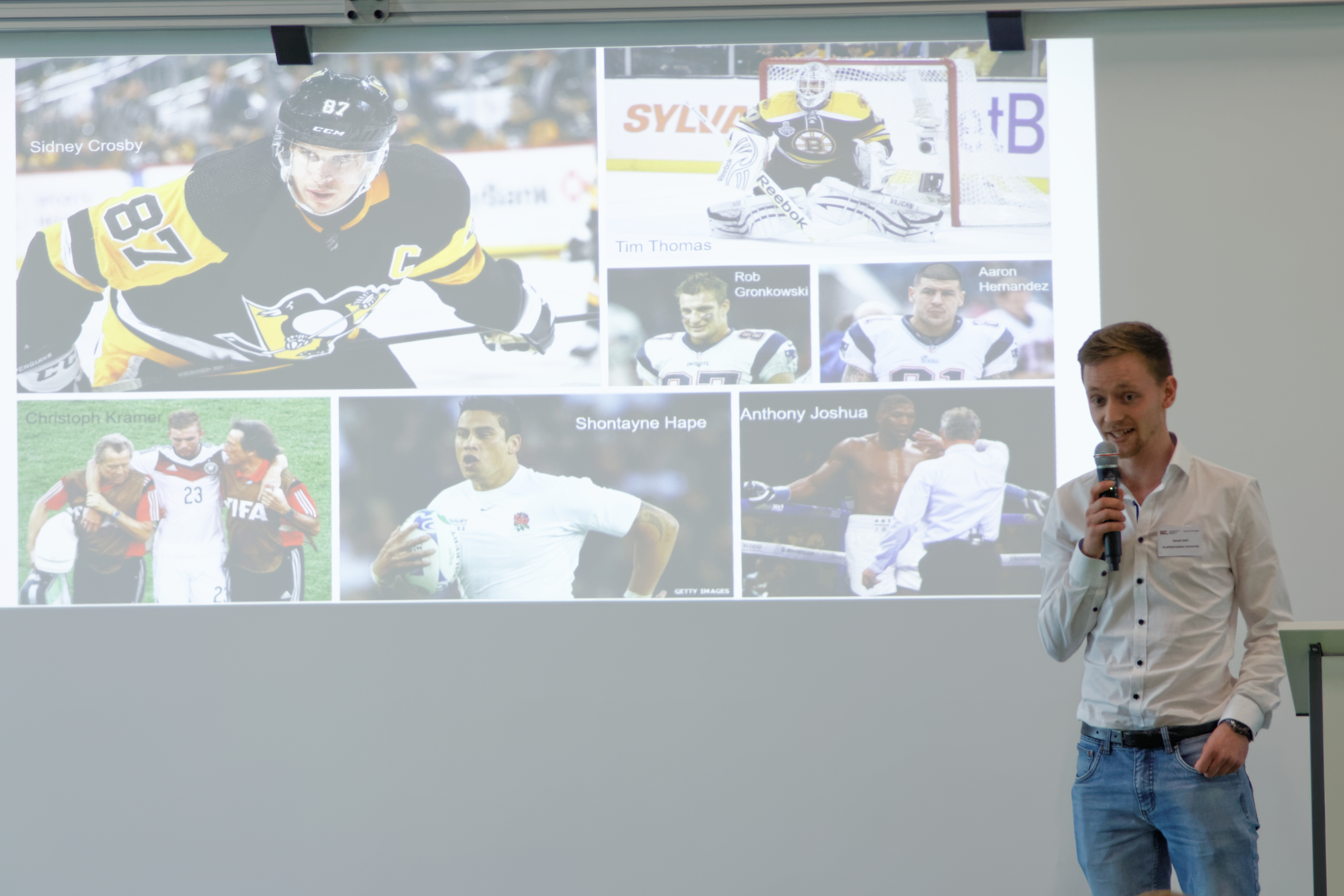
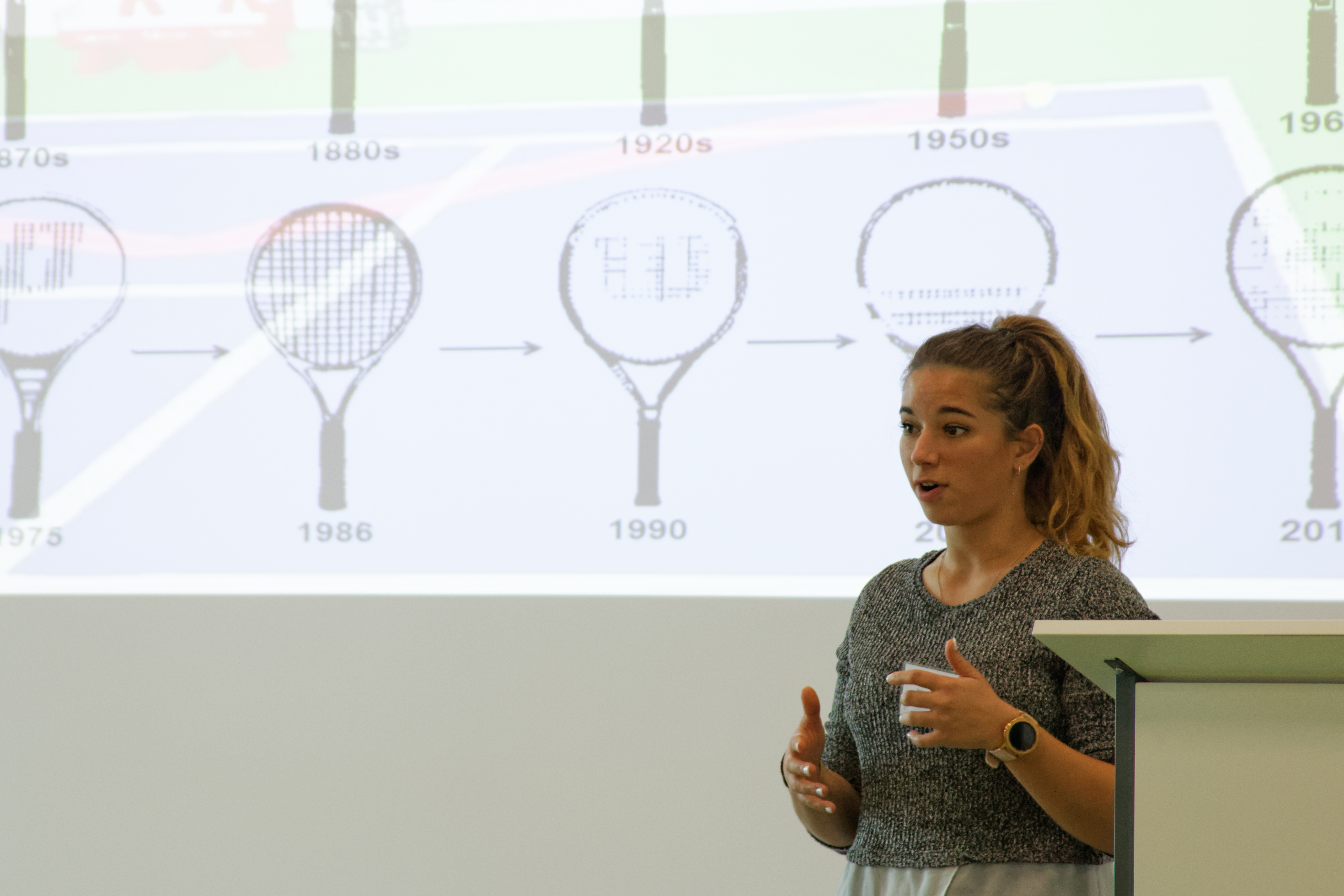
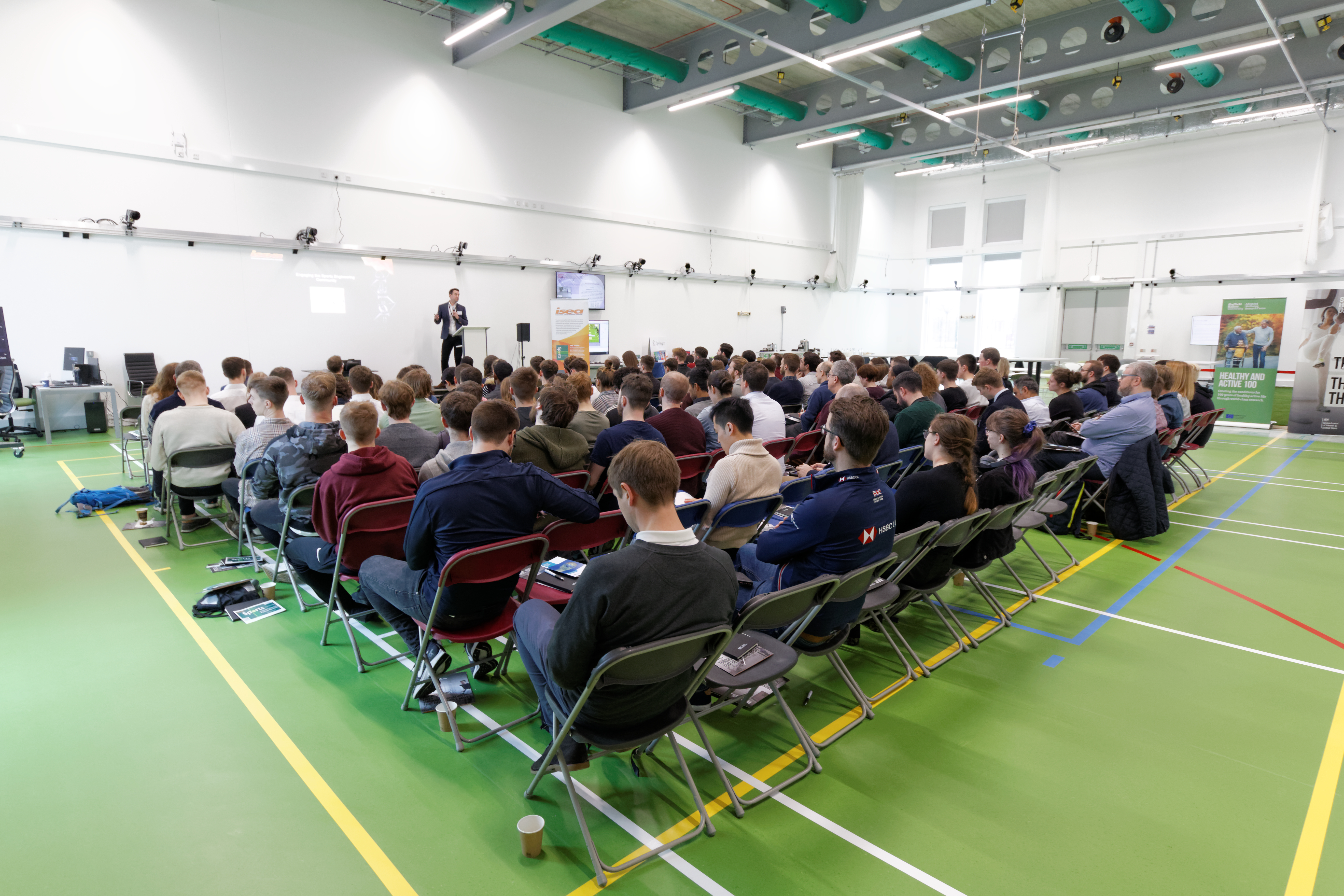
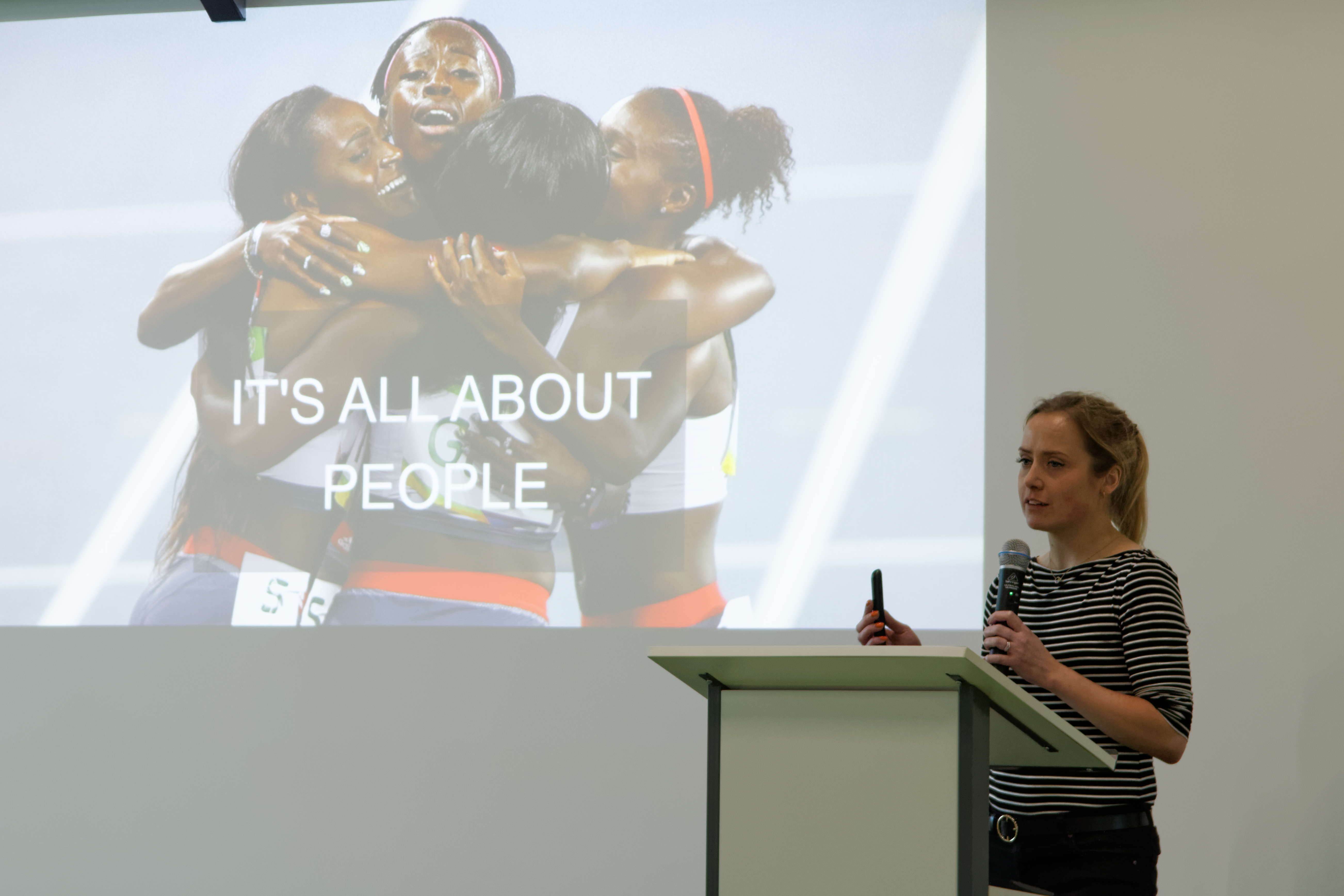






Value:
University:
Paul Ewart
The first of its kind symposium for the Equestrian Polo community was created and organised through a collaboration of our Sports Engineering and Polo Science groups. The event was strategically advertised through social media (facebook, twitter, instagram …), and the centre and community newsletters, word of mouth and email listings. The engagement of key influences was also well received, this included the worlds top ranked female player, the top ranked NZ players and a world class polo mallet manufacturer. It was shown to have a reach of 10,000 by the day of the event and is expected to have reached many more by the time the recorded presentations and discussions are edited and placed for online viewing.
The evening of the event saw a great turnout with our participant numbers being easily reached. There were forty external people from the polo community, this covered coaches to officials, players and industry people, as well as academics from both Centres (Engineering & Sport Science). The players included some of the highest ranked players in both NZ and the world. The pre-event gathering provided refreshments and an unofficial speed dating where the visitors and organisers met, many for the first time. As participants had travelled up to 400 km to be there it was a great way to thank them and provide a comfortable environment to work from. The symposium was held in traditional Sport Science fashion as a fast paced moving event. The welcome and opening was held in a conventional lecture theatre space where we thanked the ISEA and other event sponsors (https://youtu.be/HlEN19FvNsQ). The first presentation by Polo Science presented the research and summarised findings since inception (twelve months) of the group (https://youtu.be/PL8M79OWxkU).
For the second session the whole symposium were uplifted and moved through to the biomechanics lab where they had their first introduction to Sports Engineering. The three presentations were delivered with an underlying theme of relationship building through future collaboration. The floor remained open during the prsentations and audience feedback was welcomed throughout (https://youtu.be/F2FSAh5MHBQ and https://youtu.be/14O9WWQAnug) The first part of this session involved a presentation on the application of mechanical principals and theory to Polo. Firstly, the process of characterisation of the mallet was discussed with respect to materials properties, testing methods and mechanical properties. This was then expanded to present the basics of product testing and determination of a polo specific testing regime using both static and dynamic loading. The basis of this was to present to the players and coaches an understanding of how a quantitative measure for their mallets could be produced and how that might be used to enable performance improvements for them. The new bespoke swing machine was also unvailed and discussed with repect to player analysis and feedback.
The second part of this session was focused on the modelling and CFD simulation of the helmet to determine geometrical effects on the aerodynamics. The approach for this work also included an indepth look at international standards applied to head protection in general and the associated testing regimes. The overall aim being to work with players, coaches and helmet manufacturers to improve on current designs through both performance and useability as well as prevention and minimisation of impact injury.
For the third session the participants were again up lifted and moved through to the dynamic testing facility where they received two presentations. The focus of this session was also future projects and the delivery of new technologies to analyse and support player performance. The first presentation introduced the use of GPS tracking devices for the player and mount during play. The initial testing data was shown and the floor was opened to gauge interest and determine where the participants would see value to engage with the project. In a similar fashion the second presentation showed the use of individual heart rate monitors on both players and their mounts. The initial data and the expected value of the technology was discussed with some input from the initial subject. Again, participant discussion was had to determine how these devices could be utilised by the players (https://youtu.be/Vbf5--fjNvg and https://youtu.be/xC2sEtDgw0k).
From here there was a shift to the engineering facility for food, refreshment and networking. This enabled the presenters to be accessible to the other participants to answer questions and complete the discussions from the previous sessions. The final session was a Polo science lead Q&A with the highest ranked female player in the world. This saw some vibrant discussion on the game and the approach taken to training and match play as well as some targeted details on coaching and technique advice (https://youtu.be/LMdvPMhcNrA).
Overall the evening was a hugh success made more enjoyable due to the grant received. This also had the added benefit of attracting other sponsors and connections with business allied to the Equine and Polo communities that we hope to retain for future projects. Discussion around the provision of student scholarships for both undergraduate and graduate students is on going.
Subsequent outputs include; this report, and simliar reports to Engineering NZ and the PoloTimes. Edited videos uploaded to YouTube, and distributed to social media and Polo organisations (All videos can be found here: https://www.youtube.com/playlist?list=PLFUjSdDz8Blbz4eEhB1n9KpE8MSq4vsxR .
We met the intended budget with a little juggling and sponsor input that saw the final accounts cover; Catering (20 %), Particpant travel and accommodation (50 %), Promotional material (20 %), Other (10 %).
Year: 2020Value: £2,200
University: Waikato Institute of Technology
Nick Hamilton
Engaging Students and Wider Public With Sports Engineering Through Social Media
This grant supported the attendance and activity of students at the 2019 Special Topics in Sports Engineering course, held at Delft Technical University, as a vehicle to engage the participating students and wider general public in sports engineering. Through attendance in this course the students were exposed to the global sports engineering community network and the activities facilitated the expansion of the international network.
In total 8 students from the MSc Sports Engineering course at Sheffield Hallam University attended the two-week course which is delivered collaboratively between TU Delft, Sheffield Hallam University (SHU), and VU Amsterdam. Working in interdisciplinary teams the students from the collaborating universities completed an engineering challenge based around a theme relevant to sports engineering.
The students were challenged to create a predictive model of a track cyclist, with the students having to predict how quickly a cyclist could complete an acceleration lap from a standing start, and then how far the cyclist would travel if they were to coast to standstill. The accuracy of the models was assessed in a live test at the Sportpaleis Alkmaar Velodrome, with each team responsible for sourcing a bicycle and cyclist for the test. To support the creation of their models, students attended a series of lectures, laboratories, seminars and workshops covering topics including; predictive modelling, bicycle stability and rolling resistance, aerodynamics, cycling biomechanics, thermo physiology, and power endurance in sport.
Particular highlights included; a tour of the TU Delft wind tunnels where the Dutch cycling team just happened to be testing their new track bike for Tokyo 2020; and a talk by Team Sunweb on the preparation, and performance prediction, of their cyclists in time trial events. Students conducted VO2max and Wingate tests on their team cyclists at the VU Amsterdam physiology labs to understand their power output, and an experimental test day was held at the TU Delft sports hall.
The final models were assessed in a live test at the Sportpaleis Alkmaar Velodrome. Prior to taking to the track student teams presented their predictions for the first lap time and the coasting distance travelled. Students were not permitted to coach or instruct their cyclists during the event and instead had to wait for the results that were measured and scrutinised by participating staff. The winning team posted a first lap time within 0.01 seconds of their predicted time and implemented a Monte Carlo simulation to assess the likelihood of their predictions. Their reward was the coveted Special Topics Course golden bicycle bell.
Throughout the course students were encouraged to be involved in documenting and sharing their experiences. Prior to commencement of the event the SHU students received pre-course training and advice on the effective use of social media from the SHU ASPA social media engagement team. Specific social media platforms were chosen for specific target audiences including Instagram (secondary/higher education), Twitter (general public), and LinkedIn (professionals/business). Existing social media channels and networks within the Centre for Sports Engineering Research, and Sheffield Hallam University were used for this activity, with media released on a daily basis.
Additional to this activity student testimonials of partaking in the course were collated, and blog articles of the experience have been created and hosted on the engineeringsport.co.uk engineering and physics blog. A further blog article concerning the technical details of the challenge is in production to be released late summer. The experiences and details of this visit and activity are also to be shared at the SHU SPARC research seminar series later this year, to highlight the benefits of partaking in such experiences.
Through participating in this course and the associated activities the students, not only had a lot of fun, but gained valuable experience of working with engineers, sports scientists, and academics from a variety of backgrounds and cultures. This was evident in the collated written testimonies, sample extracts of which can be seen below;
“Overall, I found this course to be challenging and interesting, but most importantly fun. The course allowed for new skills to be developed and knowledge to be learned, and then to be applied to the task at hand. To come up with a model and test it against an actual experiment was really interesting and enjoyable.”
“It was really nice to work with different universities and I think that is the best element of this course. In this way you learn a lot and it is also fun to learn about the other ‘cultures’ of the different universities.”
“These two-weeks went by so fast because each day was a new adventure, each day meant new friends and new experiences. All these aspects combined with the fact that we had to do the thing that we truly love is amazing.“
“To conclude I learned a lot the last two weeks, made new friends from different universities and became really enthusiastic about sports engineering and all its different topics. Thank you for offering me this possibility!”
SHU students participation in this activity was only possible due to the kind ISEA assistance in meeting the shortfall in associated cost, after student contribution, and SHU contribution. As such the awarded grant application was used in full to support the travel costs associated with this activity.


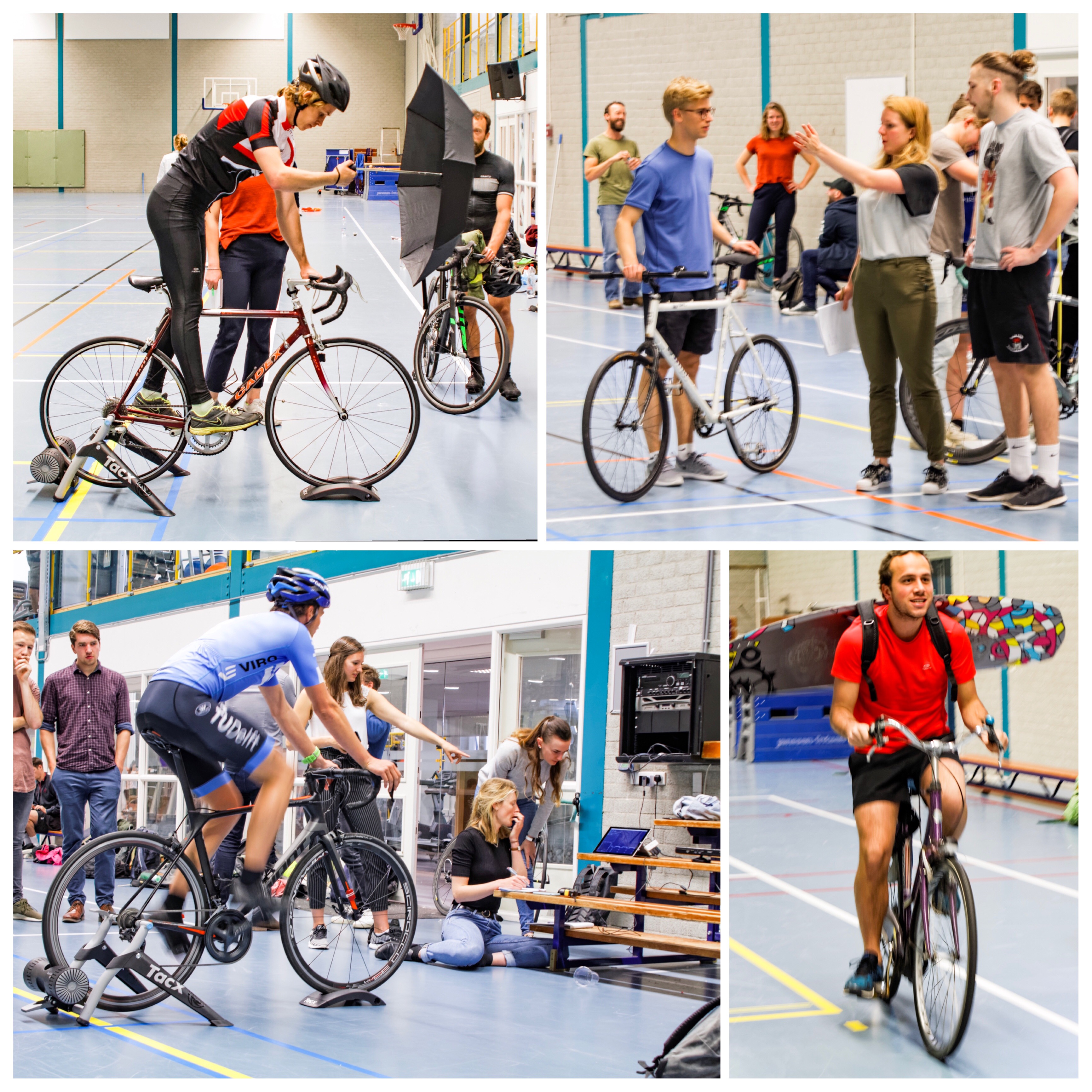

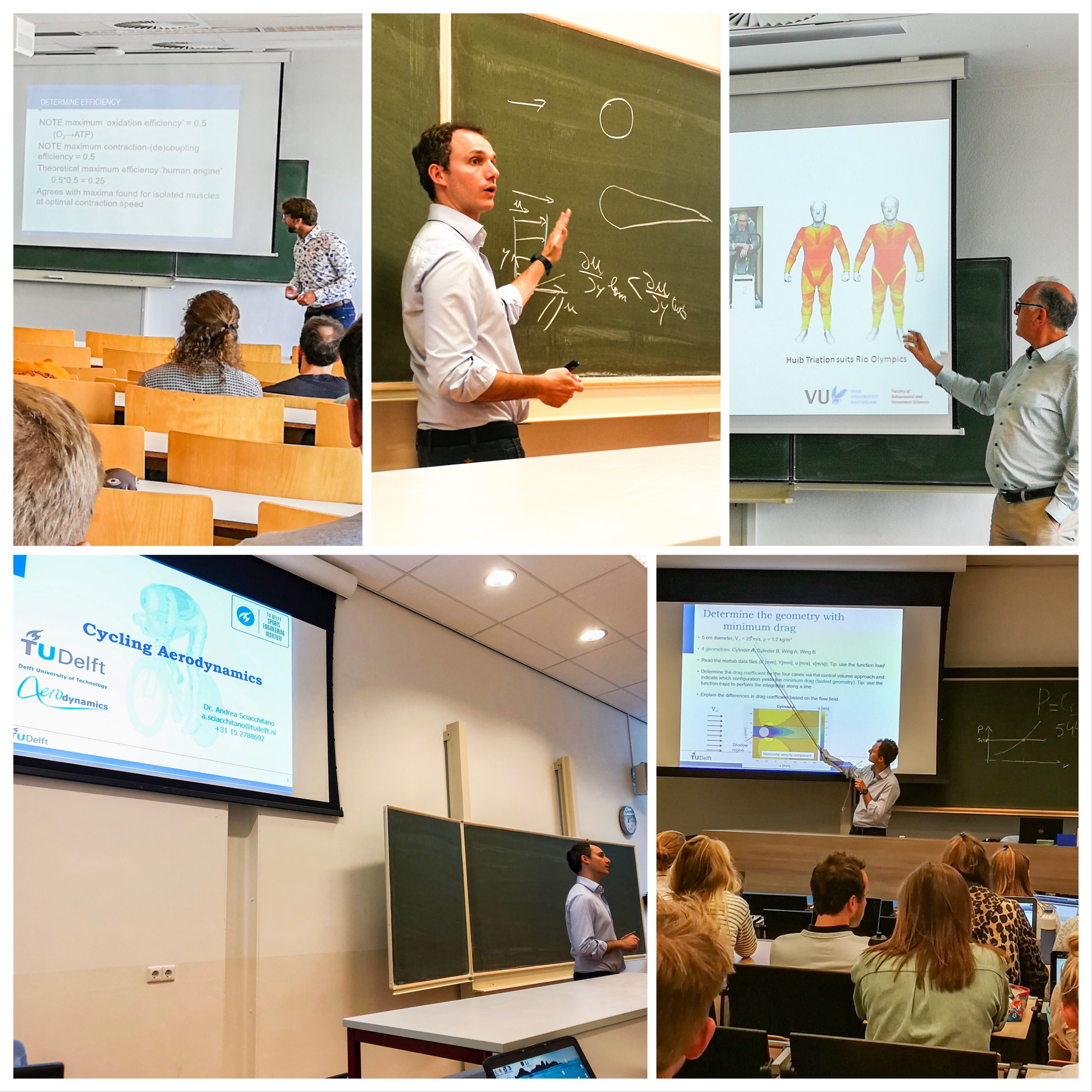


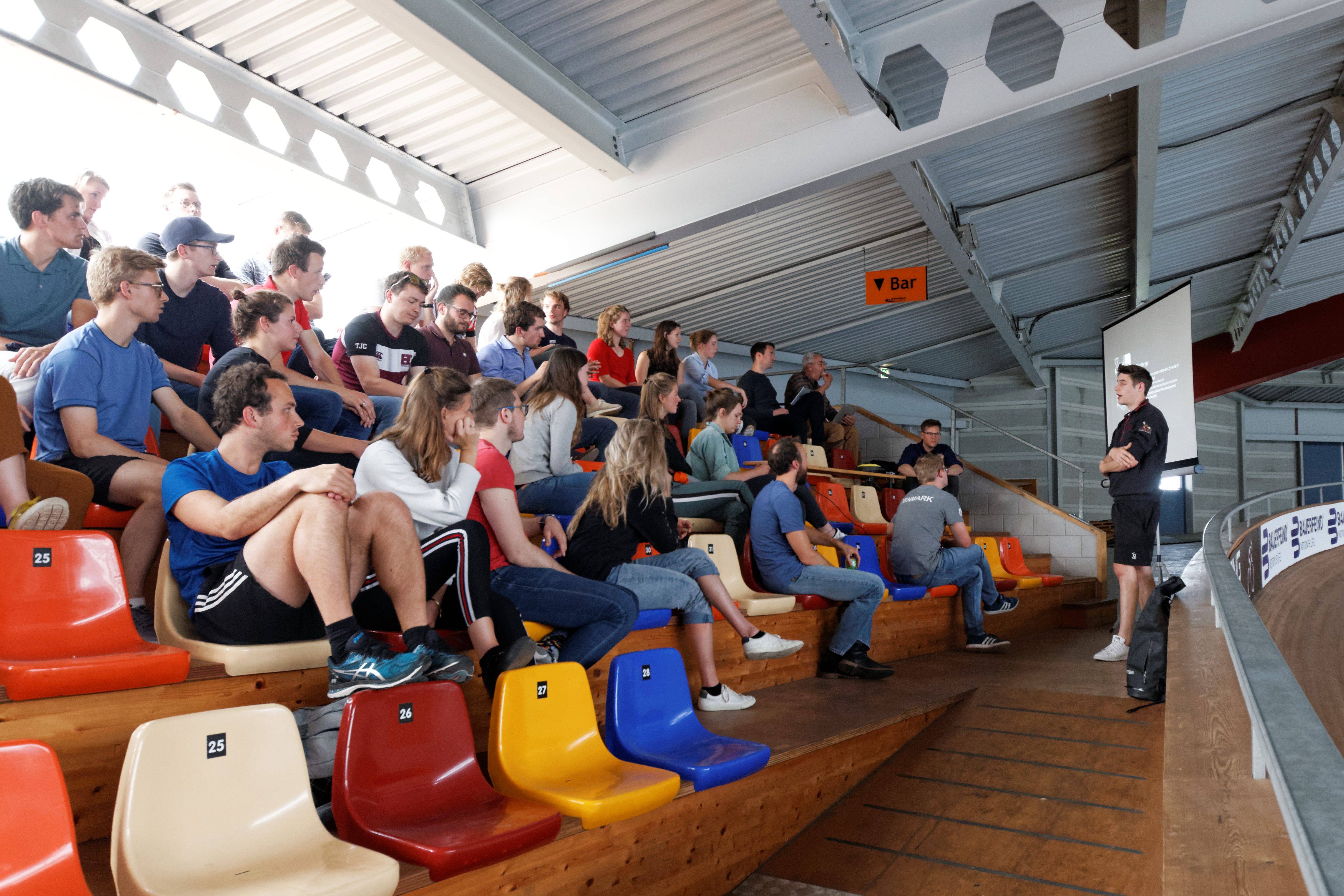


Value:
University:
Derek Covill
Promoting Sports Engineering at the Bespoked Bristol Bicycle Event
This Engaging Sports Engineering Grant supported our exhibition stand at the Bespoked Bristol Bicycle Show in May 2019. Bespoked is Europe’s biggest event relating to custom bicycles and their makers, with typically more than 6000 visitors from all around the world. It is the place for the public, industry and press to meet the independent makers and designers of the bicycle world. Our exhibition stand included members of the International Bicycle Engineering Group (IBERG: http://iberg-bike.org) Dr Derek Covill (University of Brighton) and Dr Andres Velázquez, and Dr Velázquez also had his team on hand from the Escuela Técnica de la Bicicleta, Madrid, Spain.
At the show, we also tried to maximise our exposure by delivering a headline presentation on the Friday evening at the event to the general public and to representatives from the industry. For this presentation we were joined by our IBERG colleague Prof. Jean-Marc Drouet from the VÉLUS Laboratory at the Université de Sherbrooke in Canada, who presented with us over skype. Our presentation introduced Sports Engineering and the ISEA, and discussed a range of Bicycle related Sports Engineering research topics and was also a great platform for us to launch our new research project: The Steel Bicycle Project. This project aims to bring the benefits of sports engineering research to industry by raising awareness of engineering principles that relate to bicycle design and to support frame builders in designing and fabricating better and safer products.
In the lead-up to the show we were featured in the show’s newsletter, and an article was written about the project on the cycling industry news website (https://cyclingindustry.news/iberg-to-launch-the-steel-bicycle-project-at-bespoked-2019/).
Over the course of the long weekend we were able to discuss Sports Engineering and Bicycle related projects to a nice wide audience. Memorable conversations were had with keen cyclists, parents of cyclists, academics, frame builders, equipment manufacturers, tube manufacturers, bicycle designers, aerospace engineers, automotive engineers, mechanical engineers, nuclear submarine welding experts, helicopter rotor blade stress engineers, and many more! We found it to be a highly engaging experience, and we did a small survey to assess the impact of our work there. We found that 88% of those surveyed believed that what we are doing is valuable for consumers, while 85% felt they had a better understanding of what sports engineering (and also bicycle engineering) is as a result of our work, and finally 85% of those surveyed believed that what we are doing is valuable for the industry (85%).
The funding from the Engaging Sports Engineering Grant was used to pay for the event itself, including the exhibition stand and peripheries (e.g. power), printing pop-up banners and onsite parking. It was also used to pay for a desktop rig (including frame materials, measurement equipment, electronics) which could used to demonstrate some fundamental mechanical properties of bicycle frames and the methods used to join them together. As part of the show, we also started doing a survey of professionals bicycle frame builders and manufacturers, to gauge their wants and needs to help inform the direction of our the project from here. Following this and some initial experiments we’ve been carrying out in recent months, we are aiming to present our work at the 2020 ISEA conference in Tokyo. For us this is just the start, we’re hoping to grow this project to work with a wide range of frame builders and tube manufacturers in particular, to help generate new knowledge in the field and bring the benefits of sports engineering research to industry. We thank the ISEA for giving us the opportunity to promote Sports Engineering at such a high profile and popular event, and for enabling us to kickstart our project in style!
Year: 2019Value: £2,500
University: University of Brighton
Tom Allen
Prevention, Precision and Protection: The Engineering of Sport
The funds contributed towards costs for running three public engagement events (e.g. materials/ consumables, marketing materials, popup banners, travel etc.) at Manchester Science Festival 2018:
1) An Ace History of Tennis at Manchester Tennis and Rackets Club (MTRC) on 20th Oct.,
2) High Tech Tennis at The Northern on 27th Oct., and
3) Boobytrap at Chillfactore on 21st Oct.
The participants at the tennis events included festivalgoers, MTRC and The Northern members and members of other tennis clubs. The event at MTRC tended to attract adults, with an interest in tennis and local history, who had booked onto the highly informative guided tours of the historical building, which dates back to 1880 and is the oldest sports facility in Greater Manchester to have retained its use to the present day. In contrast, the event at The Northern tended to attract families who stayed for the afternoon to engage with the more hands on activities, including the opportunity to play with a variety of tennis rackets of different ages. The Zenizz smart court was particularly popular, as was the smart racket with an inbuilt sensor from HEAD. Both events were supported by staff from Wimbledon Lawn Tennis Museum, helping to raise their profile within Manchester, while showcasing the rich history of tennis and The Championships at Wimbledon. Neither event attracted the numbers we had hoped for, possibly
due to their locations away from the main festival hub at the Science and Industry Museum, but feedback from participants (verbal and written) was very positive, so we can consider the events to be a success.
The participants at the snowsport events included festivalgoers, members of public using the ski slope and shoppers/diners, participants in the Boobytrap event and their family/friends and members of local and regional snow sports clubs. We were part of a larger science festival event at Chillfactore, which included disability snowsport, snowmaking, snowsport clothing and a 3D scanner for ski booting custom fitting, amongst others. The event was well attended, and in this instance the location away from the city centre was an advantage, as was the additional appeal of the activities run by others, attracting a different demographic, including youths and families from the local area. We felt that this event was particularly good at introducing youths, who may not otherwise engage in the science festival, to the often hidden science and engineering behind snowsports. We also hope that showcasing and discussing our work will have the additional benefit of encouraging snowsports participants to wear protective equipment.
The three events were also publicised on social media, including an online quiz (bit.ly/msftennis), allowing us to reach and inspire people who did not attend in person. The online quiz included the question “Sports engineers are…?”, and we received the following answers, which we think are insightful and reflective of the verbal feedback we received at the events.
- Amazing
- Great
- Skillful
- Top
- Cool
- Intelligent
- Misunderstood
The events were also of benefit to the University students, including undergraduate student helpers and PhD students who had the opportunity to talk about their work with a new audience and develop their public engagement skills. The visitors provided valuable feedback and engaged in discussions, which challenges the PhD students and helps them to think differently about their research. Three of our PhD students are now registered STEM Ambassadors. As a team, we now have better skills, knowledge, materials and activities in place to undertake similar events in the future, as well as teaching and outreach. So far, in addition to Manchester Science Festival we have run activities at, i) Bradford Science Festival, ii) Science Uncovered Manchester European Researchers Night at Manchester Museum, iii) Careers in Sports Engineering at Sale High School, iv) Platform of Investigation at the Science and Industry Museum, v) Women in Physics event at Urmston Grammar on 9th November and vi) Platform of Investigation - Discovering Engineering at the Science and Industry Museum.
In addition, Tom Allen received the award of Faculty Science Communication Champion in 2018, which includes £500 to contribute towards further public engagement activities.
Value: £800
University: Manchester Metropolitan University
Josh Turner
3rd Sports Engineering Seminar Day - 31st January 2019, Loughborough University
This January, the Sports Technology Insitute at Loughborough University, hosted the 3rd "Sports Engineering Seminar Day". The seminar day is a free, student-led, one day event, which brings together the community of sports engineers in order to communicate the latest work being conducted in the field. The day also provides opportunities for networking and potential future sports engineering collaborations and careers, for both current and prospective sports engineers. The event was possible through the generous funding contributions from ISEA's Engaging Sports Engineering Grant and the Wolfson School of Mechanical, Electrical and Manufacturing Engineering at Loughborough Univeristy.
The 3rd installment of the event consisted of a tour of the laboratories at the Sports Technology Institute and oral presentations devivered by researchers and academics from Loughborough, Manchester Metropolitan, Sheffield Hallam and Nottingham Trent universities as well industrial speakers from Adidas, the ECB, Gunn & Moore and NURVV. The event and presentations were segmented across four main research themes: 1) Human movement and measurement 2) Prevention and mechanisms of injury 3) Materials, apparel and equipment 4) Modern technologies. Prizes kindly donated by Adidas were awarded for the best student presentation and the two most engaging audience members.
In total, 120 delegates across 11 universities and 7 industrial companies attended the event, continuing the trend of increased attendance year on year. This year there were a mixture of new and familiar faces from previous seminar days in attendance, therefore continuing to expand the UK hub of sports engineers built via the seminar events.
Feedback from the event was all positive, with 65% of respondants rating the day as "very good", with the remaining 35% rating it as "good". The attendees praised the range of presentations, both in terms of academic/indsustry and the topics covered, with the quality of the presentations also being highlighted as a positive from the event. The feedback gathered from the 3rd hosting of the event has been passed on to Sheffield Hallam university, who will be hosting the 4th seminar day next year and we at Loughborough wish them all the best and are sure they will host a great event.
On behalf of the 3rd Sports Engineering Seminar day committee, we would like to reiterate our thanks to ISEA, the Wolfson School of Mechanical, Electrical and Manufacturing Engineering and Adidas, who's support enabled us to make this day possible. We would also like to thank all the speakers who gave up their time to present high quality content to the attendees, and all the attendees themselves, for supporting the event and being engaing and proactive during the day.
Year: 2019Value: £2,000
University: Sports Technology Institute, Loughborough University
